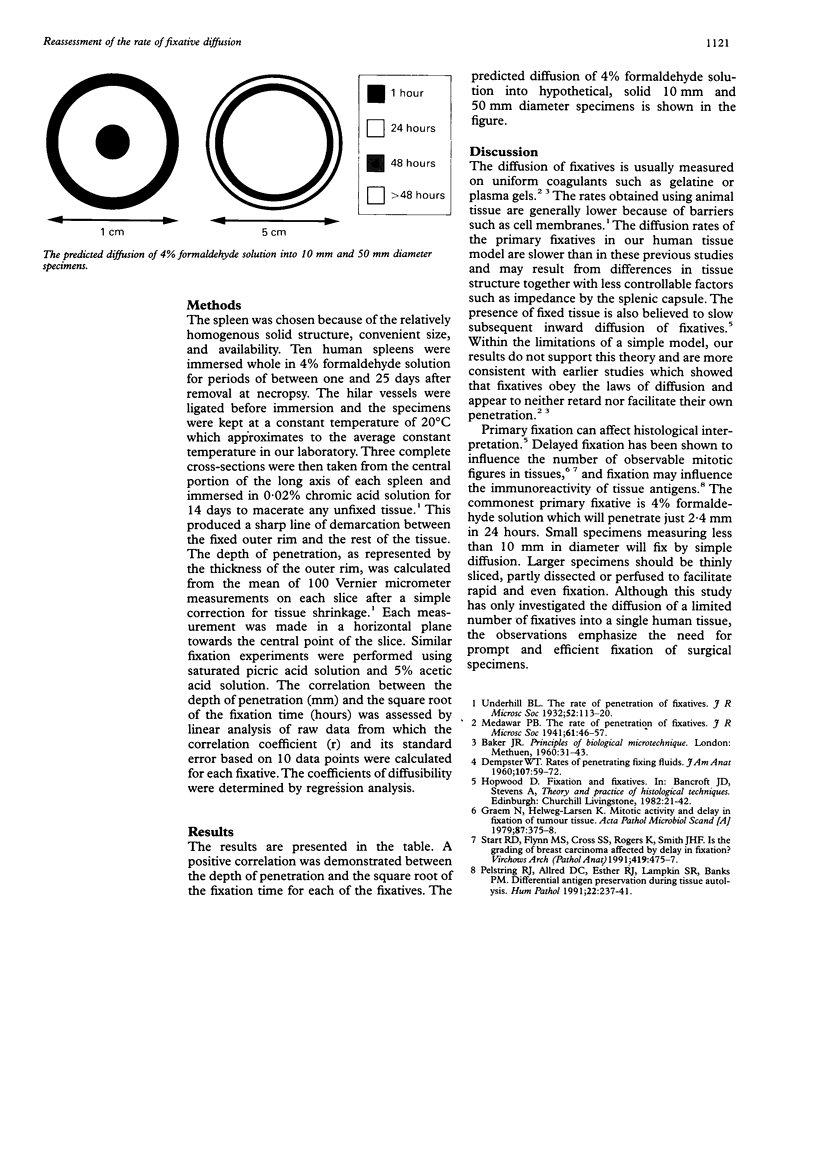Abstract
The diffusion of fixatives is slow. Early work using plasma gels and animal tissues showed the distance penetrated by a fixative to be a simple function of the fixation time but this relation has not been established in human tissues. The rates of diffusion into whole human spleens were measured for three primary fixatives over periods ranging from one to 25 days. A positive correlation was demonstrated between penetration distance (mm) and fixation time (hours). The diffusion rates were slower than those in previous studies. These results have possible implications for the handling of surgical specimens.
Full text
PDF

Images in this article
Selected References
These references are in PubMed. This may not be the complete list of references from this article.
- DEMPSTER W. T. Rates of penetration of fixing fluids. Am J Anat. 1960 Jul;107:59–72. doi: 10.1002/aja.1001070105. [DOI] [PubMed] [Google Scholar]
- Graem N., Helweg-Larsen K. Mitotic activity and delay in fixation of tumour tissue. The influence of delay in fixation on mitotic activity of a human osteogenic sarcoma grown in athymic nude mice. Acta Pathol Microbiol Scand A. 1979 Sep;87A(5):375–378. [PubMed] [Google Scholar]
- Pelstring R. J., Allred D. C., Esther R. J., Lampkin S. R., Banks P. M. Differential antigen preservation during tissue autolysis. Hum Pathol. 1991 Mar;22(3):237–241. doi: 10.1016/0046-8177(91)90156-j. [DOI] [PubMed] [Google Scholar]
- Start R. D., Flynn M. S., Cross S. S., Rogers K., Smith J. H. Is the grading of breast carcinomas affected by a delay in fixation? Virchows Arch A Pathol Anat Histopathol. 1991;419(6):475–477. doi: 10.1007/BF01650675. [DOI] [PubMed] [Google Scholar]




